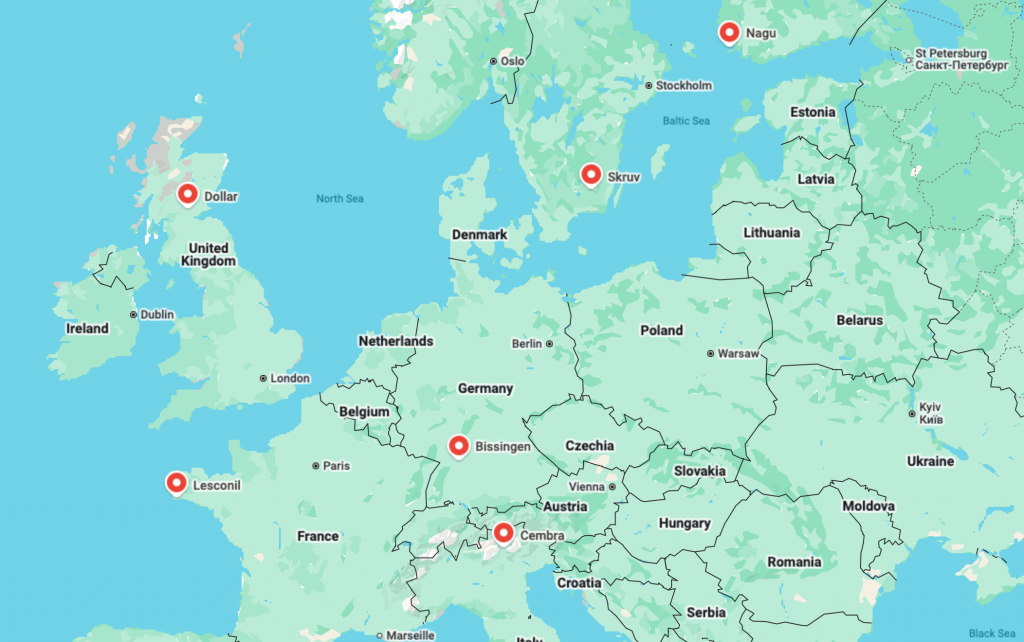Villages

The studies conducted in 1975 and 2000 examined the changing acoustic environments of six European villages: Bissingen (Germany), Cembra (Italy), Dollar (Scotland), Lesconil (France), Nauvo (Finland), and Skruv (Sweden). The original 1975 research, led by the World Soundscape Project, focused on documenting the unique soundscapes of five rural villages to explore the relationships between sound, community identity, and environmental change. In 2000, the follow-up study revisited these sites and added Nauvo, Finland, to investigate how modernization and cultural shifts had influenced their soundscapes over 25 years. (See https://urn.fi/URN:ISBN:978-952-7266-82-3.)
The villages were carefully selected based on their diverse geographical, economic, and cultural characteristics, offering a broad representation of European rural life. Criteria included unique acoustic environments, distinct community structures, and contrasting economic activities, ranging from fishing and farming to tourism and industry. Fieldwork in these villages involved detailed sound recordings, soundwalks, and interviews with residents to capture both objective data and personal experiences of soundscapes.
Fieldwork dates for the 1975 study spanned the summer and early autumn, while the 2000 revisitation was conducted over several months. Researchers carried out a variety of practical activities, including sound level measurements, creating soundscape maps, and engaging residents through interviews and sound preference surveys. These methodologies not only documented the soundscapes but also highlighted their role in shaping cultural memory and community identity.
In 2025, our project SOMECO – Sonic Mediations and Ecocritical Listening will revisit these same locations to collect data comparable to the earlier studies. This research will explore sound mediation, ecocritical listening, and the dynamics of human voices within these evolving soundscapes. Stay tuned for updates!
Explore the villages!
Source: Järviluoma et al. 2009 / The content of this page combines the expertise of our research team with AI-assisted tools, ensuring precision and readability.